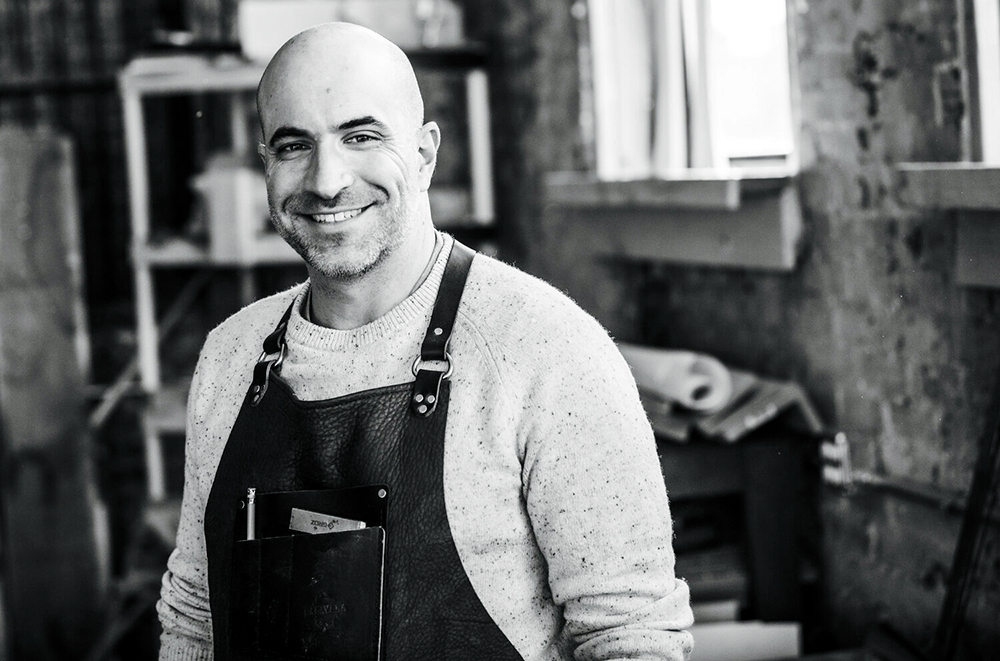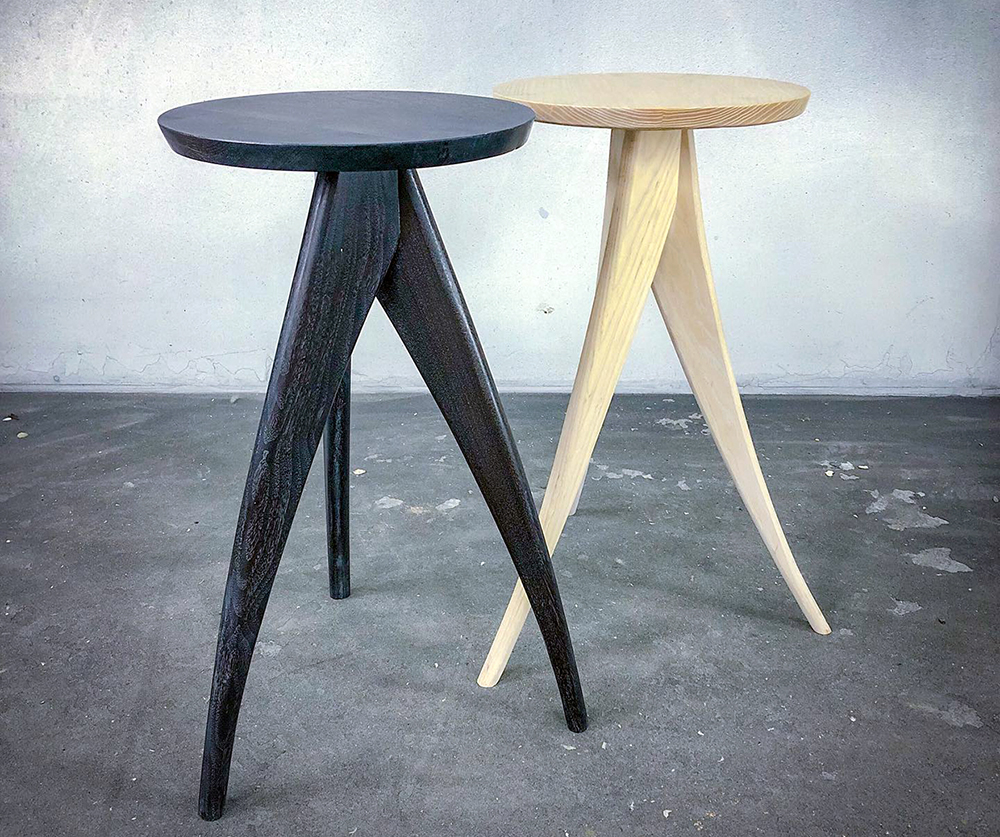
John Pryor has come home to Kansas City after a stint in Boston’s corporate tech culture. He and his wife Megan met at Kansas State; Pryor has a graduate degree in history and another in theology. Today, he finds history and “soul” in a way he never expected.
He founded Madison Flitch in 2016—“Madison” from his family and “Flitch” from the old English word for a wood slab. With traditional skills and master craftsmanship, he creates heirloom pieces with a modern design sense, using a locally sourced, tree-to-table approach. He also works in stone and metal to achieve “furniture as art.”
Recently during the COVID-19 crisis, Pryor began making custom protective masks, donating one to first responders for every one sold. The same thoughtful process goes into this endeavor. Says Pryor, “We studied CDC-led research on how to maximize the effectiveness of fabric masks, NIH research on the effectiveness of non-woven fabric for filters, and university research on synthesizing materials to ensure the success of a fabric mask. We then connected with a research and innovation department at a hospital in Minnesota to help with the design; from there the filter pouch was developed. We made a few improvements to improve fit, and the first Madison Flitch face mask was born.”
You give old, discarded, and diseased trees a new life. How do you find the “soul” of each tree?
At Madison Flitch we’re always looking for trees that have the most character, which we find through old-growth trees grown in urban areas. Ninety-nine percent of the wood available in stores comes from trees grown in managed forests by big businesses—and they want them to grow fast, straight, and without much character so as to maximize profit. By harvesting urban trees, we’re able to find the old-growth trees that distinguish themselves through their natural beauty, grain pattern, and color.

How does working with wood feed your soul?
Working with wood is something of a meditative act, but it’s not really about me. Much of the value in my work is by taking trees destined for the mulch pile and preserving their beauty in the community. My work celebrates Kansas City, its beauty, and the community through tangible, real goods that you can see and touch in a space. By using our original, creative designs to platform the beauty of the wood, we serve the community’s need for beautiful spaces—we also make Kansas City proud; there’s nothing more soul-giving than selling one of our pieces to an outsider in New York or Los Angeles who feels they’ve discovered a fresh take on wood in furniture.
What stories do trees tell?
Much of a tree’s story comes from its place, history, or the grain character itself. One tree we harvested came from a 150-year-old black walnut tree harvested from the edge of the Missouri river. It was there when the first settlers to Kansas City arrived! More tangibly, the soil and water conditions in the Kansas City area and beyond in the Midwest give our trees unusual color and grain patterns. Wood is like wine in that way, in that the terroir of a region gives it unusual characteristics. Black walnut, for example, is nicknamed “Missouri black gold” due to its rich, dark color—it’s so prized that people in China pay an exceptional premium for it.
You came back to Kansas City after living in Boston. How has this nurtured your dream?
I lived and worked in the Crossroads neighborhood and was received with incredible hospitality from the Kansas City arts community. Their generosity encouraged me to keep Madison Flitch in the neighborhood permanently, despite the costs, in order to add another creative arts gallery to the neighborhood.


